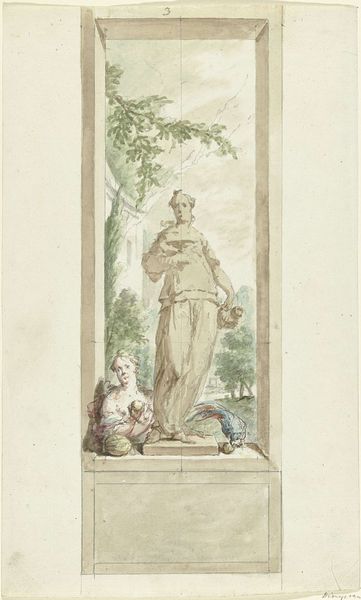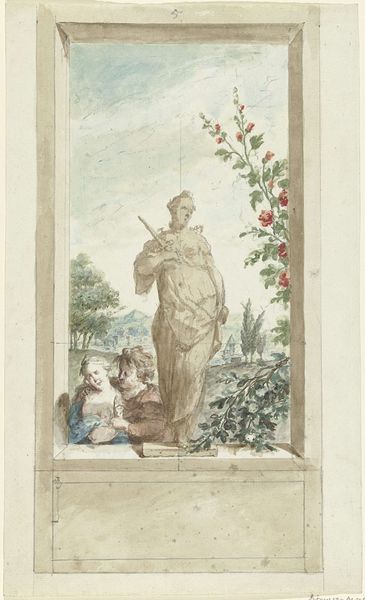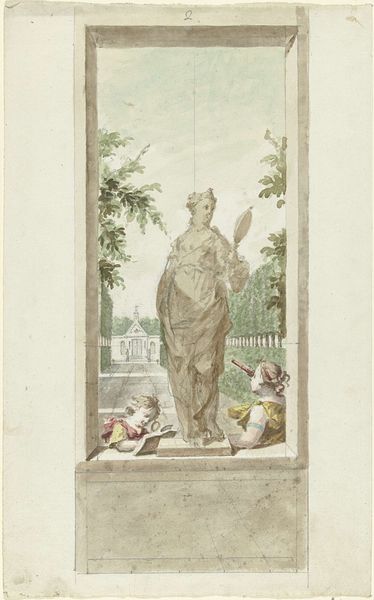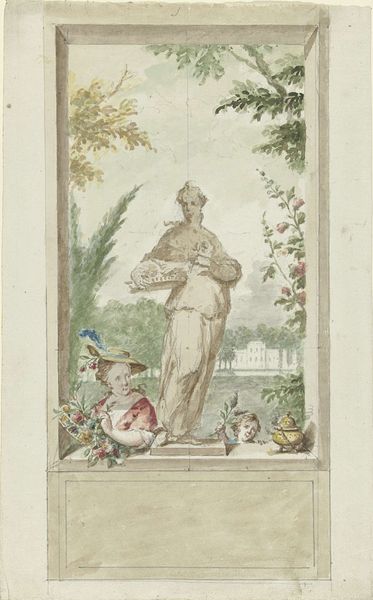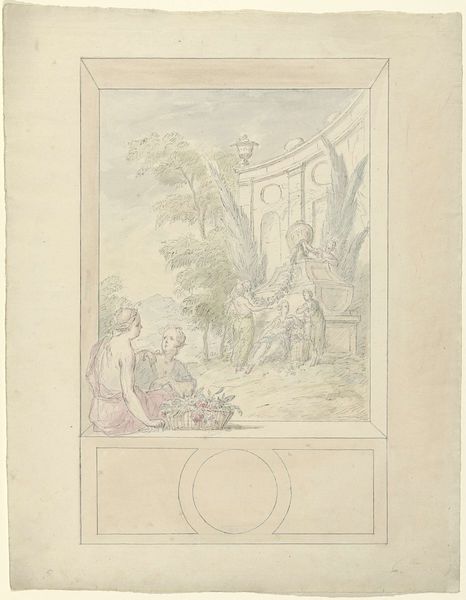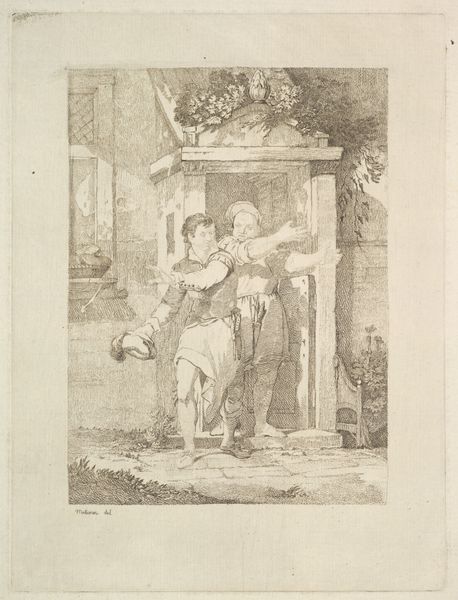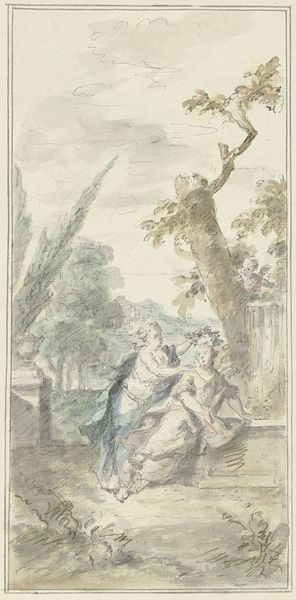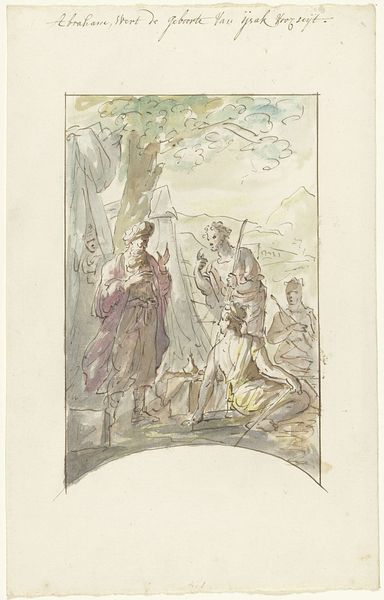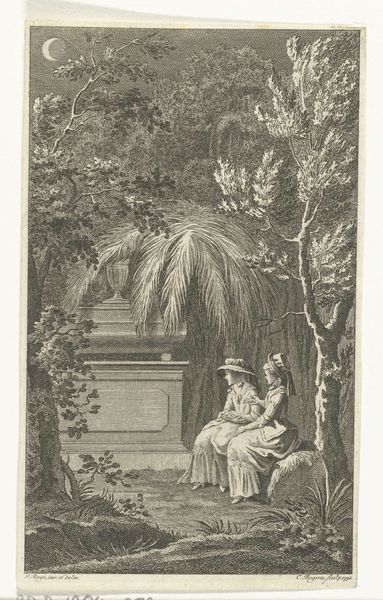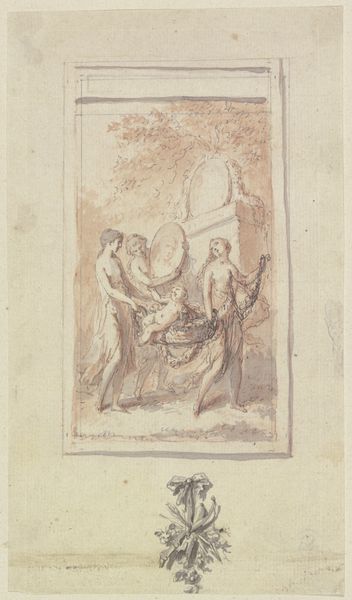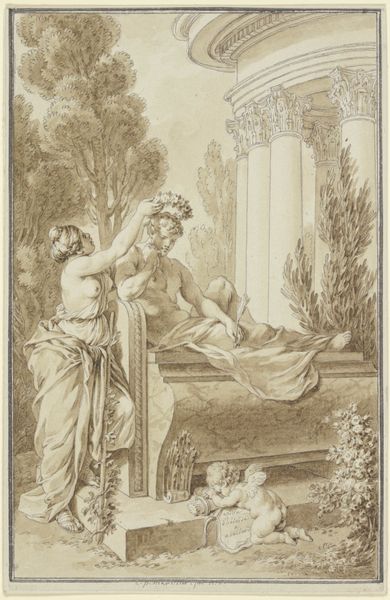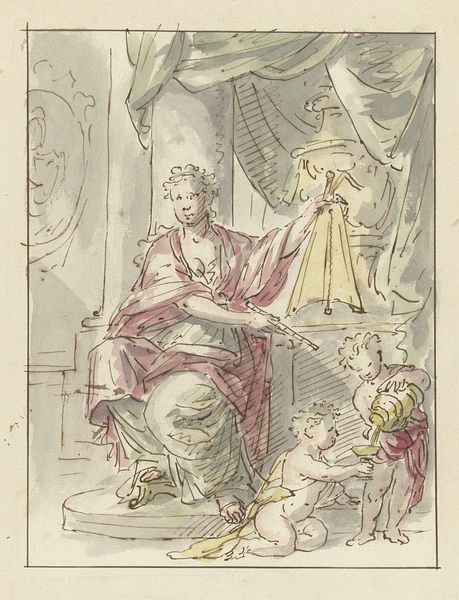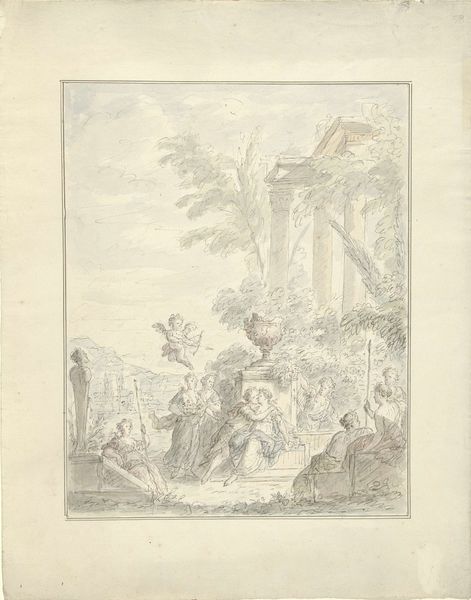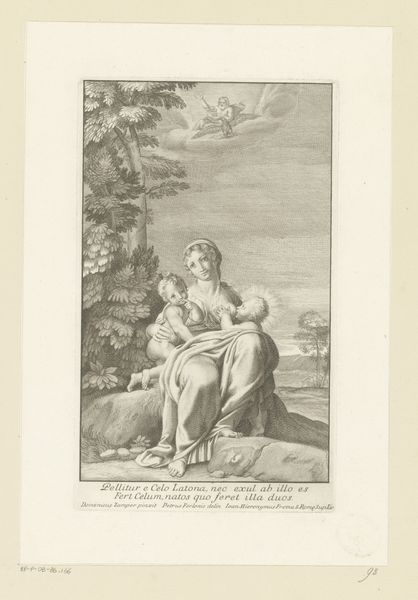
Ontwerp voor een zaalstuk: standbeeld van Flora waarachter een vrouw met bloemenmand 1715 - 1798
0:00
0:00
drawing, watercolor, pencil
#
drawing
#
water colours
#
landscape
#
figuration
#
watercolor
#
coloured pencil
#
pencil
#
botanical art
#
watercolor
#
rococo
Dimensions: height 242 mm, width 172 mm
Copyright: Rijks Museum: Open Domain
Curator: This piece immediately strikes me as airy, even whimsical. The soft colors and almost dreamlike setting evoke a feeling of gentle beauty. Editor: We are looking at a work titled "Ontwerp voor een zaalstuk: standbeeld van Flora waarachter een vrouw met bloemenmand," which translates to "Design for a Hall Decoration: Statue of Flora behind a Woman with Flower Basket." Created by Dionys van Nijmegen, sometime between 1715 and 1798, it employs watercolor, pencil, and colored pencil, quite a delicate combination. It reflects Rococo aesthetics popular during that period. Curator: Absolutely. You can feel the influence of Rococo's lightness and focus on nature and pleasure. The composition feels carefully staged. Is this how the aristocracy saw themselves, or wished to be seen? Surrounded by beauty and allegorical figures? Editor: It speaks to that world. Consider the rise of decorative arts during this period. Spaces were conceived as total works of art. I would say this drawing might represent a proposal for a decorative hall piece. Note the design element with the circles, ready to fit into interior architecture. The figure of Flora is prominent, representing the springtime, flowers, and fertility in Roman mythology. Her enduring symbolism provided a cultural continuity, linking to ideals of rebirth, nature, and a Golden Age. The second woman could embody everyday pastoral life made stylish, more a participant than Flora is, caught between both sides of a framed opening. Curator: Indeed, and Flora is so prevalent in art because the figure is immediately readable and lends itself to idealized imagery. This artwork also reflects something deeply embedded in the human psyche, it hints at both wild untamed nature and controlled cultivation. She almost stands guard over this space as an archetype. Editor: Interesting. Her location in the imagined space reinforces this read. The design suggests how visual and social values circulated within 18th-century society, contributing to a certain cultural and political vision. Curator: So much meaning packed into such a delicate piece! Editor: Yes, the politics of beauty were as complex then as they are now.
Comments
No comments
Be the first to comment and join the conversation on the ultimate creative platform.
